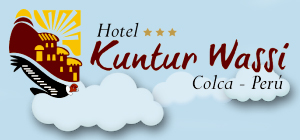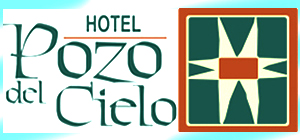PERU TOUR PACKAGES
- 4x4 Rental & Tours In Peru
- Private Ground Transportations In Peru
- DAY TRIP FROM CUSCO TO PUNO with stop at NEW Pallay Punchu Rainbow Mountain
- 2 DAYS PRIVATE SHUTTLE FROM CUZCO TO PUNO THOUGH MOUNTAINS
- Peru Self Driving Cars
- 4WD Exclusive Private Transfer From Arequipa To Puno
- Day Tour To Reserva De Salinas Y Aguada Blanca
- One Day Arequipa Off-Roading Tour
- Half Day Sandboarding Tour In Arequipa
- 3 Day Of Adventure Tours In Arequipa
- Full Day Sandboard Tour From Lima
- Lima Paracas Ballestas Ica Wineyards Huacachina Nazca Llines In 2 Days
- 6 DAYS COLCA CANYON ADVENTURE TOUR Rock Climbing - Biking - Horse Riding - Hiking & Camping
- Cusco Traditional Tour And Inti Raymi Festival
- Lima Cusco And Machu Picchu 3 Days
- Cusco Sacred Valley And 2 Days Inca Trail Trek To Machu Picchu
- Tour To Amazon Rainforest And Machu Picchu In 6 Days
- Cusco And Classic 4 Days Inca Trail Trek To Machu Picchu In 7 Days
- Jungle Tour - White Water Rafting And Lares Trek To Machupicchu - 14 Days
- Lima Amazon Jungle Cuzco And Machu Picchu Tour - 7 Days
- Tours to Nazca From Lima 2 Days
- Full Day Flight Nazca Lines From/to Pisco
- Lima Paracas Nasca Tour 3 Days
- Lima Cusco And Arequipa Tour 8 Days
- Full Day Nasca Lines By Luxury Public Bus
- Overflight Nazca Line From Lima By Aircraft Travel - Full Day Guided Tours
- Nasca Line From Lima By Land & Aircraft Travel - Full Day Guided Tours
- Daily Flights Over The Nazca Lines From Ica - Half Day Tour
- Sandboard And Sand Buggy In Peru 5 Days
- NEW Sandboarding Tour In Arequipa - Full Day Guided Excursion
- Cusco Complete Tour 5 Days
- Cusco And Puno Tour 7 Days
- Cuzco Colca Canyon Arequipa - 4WD Guided Tour 2 Days
- NEW 4X4 Expedition From Cuzco To Colca Valley And Arequipa 3 Days
- NEW Arequipa Colca Canyon Puno Guided Tour In 2 Days
- Arequipa And Puno Tour 6 Days
- 4x4 Tour Arequipa - Colca Canyon - Cusco 3 Days
- NEW Puno Colca Canyon Arequipa Guided Tour In 2 Days
- Peru Classic Tour 14 Days
- Peru Classic Tour And Inka Trail To Machu Picchu 14 Days
- Peru Luxury Tours 7 Days
- Peru Adventure Tour 24 Days
- Peru Jungle Tour
- Peru Bike Tours 14 Days
- Peru Mountain Biking 25 Days
- Peru Mountain Climbing
- Peru Off Road Tour
- Peru Royal Tour 8 Days
- Peru Trekking 25 Days
- Peru South Coast Tour 7 Days
- Peru Motorcycle Tour 21 Days
- Puno Colca Canyon And Arequipa Tour 3 Days
- Puno Colca Canyon Puno 2 Days
- Puno Colca Canyon Puno 3 Days
HISTORY OF PERUVIAN CUISINE
The Peruvian cuisine or Peruvian Gastronomy depends its roots several centuries ago, producing one of the most precious cultural fusions in the contemporary world. The Peruvian cuisine recognized like most kept secrets of the world.It's known not only for its exquisite taste, but also for its variety and ability to incorporate the influence from different times and cultures.
The culinary history of the Peruvian food dates back to the Incas and pre-Incas with its maize, potatoes and spices that later was influenced by the arrival of the Spanish conquers and different migrations such as Chinese, European, Indian and Japanese immigrants (mainly throughout the 19th century).
Peruvian cuisine combines the flavors of four continents. With the eclectic variety of traditional dishes, the Peruvian culinary arts are in constant evolution, and impossible to list in their entirety. Suffice it to mention that along the Peruvian coast alone there are more than two thousand different types of soups, and that there are more than 250 traditional desserts.
The Peruvian natives had already domesticated some 1000 varieties of potatoes before the Spaniards arrived. Potatoes are probably the main contribution of the Incas to the world and this tuber were fundamental to their diet, Inca cuisine also comprised cereals like Quinua, maize, meats of Alpaca and Cuy (A native guinea pig), fruits, and obviously many kind of hot peppers.
The Peruvian cuisine is an important expression of its own culture just as its ceramics, textiles, music and literature. Thanks to Peru's three regions and ocean there are an abundance variety of fresh ingredients that satisfied not only the most sophisticated chef.
Many Inca dishes have make it practically unchanged to the XXI century, and are cooked just like 500 years ago. The best examples are probably carapulca and pachamanca.
During the Spanish Viceroyalty, which spanned over 3 centuries, the Iberian introduced many culinary techniques and ingredients, such as olives, grapes, dairy products, beef, chicken, and rice. Although native and Spanish cultures -and cuisines- were at first unconnected, they began to gradually mix, until they successively fused in Creole culture. New Criollo cuisine took the better of the two worlds to create dishes like Aji de Gallina or papa a la Huancaina, where hot peppers, cheese and milk gently blend in delicious sauces.
Spanish though didn't come alone. They brought with them African slaves, many of whom worked in the cuisines of the noble and the wealthy. Over the years African influence proved essential to Peruvian culture, particularly regarding music and cuisine. Their talent in creating delightful dishes from poor, discarded ingredients has produced two of Peru's best: Anticuchos and Tacu Tacu.
After independence (1821), a consistent wave of European immigrants arrived in Peru and their cuisines -in particular French and Italian- provided an additional twist to the culinary melting pot.
However, the real gastronomic revolution arrived from the Far East. First were the Chinese, brought during the mid XIX century as cheap labor, mainly for working in cotton and sugar-cane plantations. Chinese fervently conserved their cultural identity and traditions, and when their contracts expired many moved to Lima, establishing in a zone that was eventually dubbed Chinatown. They opened small eating places that captivated to the people of Lima. Chinese, who were mostly from the Canton region, introduced new frying techniques and ingredients like soy or ginger. Peruvian classic Lomo Saltado is possibly where their influence is most evident.
Paradoxically, when Japanese immigrants began to arrive at the turn of the century also to work on plantations, the people of Lima looked down on fish and seafood. Meat, they believed, was more refined. By the 1950s Nisei cooks had eradicated this prejudice. Their restaurants served delightful fish and seafood dishes that few could resist. Indeed, it was their subtle culinary touch to recreate Ceviche and Tiradito as we know them today. Almost unknown until recently the Peruvian cuisine is slowly conquering the most exigent palates of the most renowned worldwide chefs and visitors in Peru. Enjoy our delicious cuisines.
For more information about Peruvian cuisine click on the links mentioned below:
INCA CUISINE
COLONIAL CUISINE
CUISINE OF PERUVIAN CENTRAL COAST
CUISINE OF PERUVIAN NORTHEN COAST
CUISINE OF PERUVIAN ANDES
CUISINE OF PERUVIAN JUNGLE
CUISNE OF AREQUIPA - PERU
DESSERT AND SWEET DISHES OF PERU
PERU SOFT DRINKS
PERU ALCOHOLIC DRINKS
PERUVIAN RECIPES
CULTIVATION OF THE ANCIENT PLANTS
PERU GASTRONOMIC FESTIVAL
COCA LEAVES
CONTACT US
For more information about the tour or you request a new date to departure for this tour, please contact us.... Some of our clients e-mail us saying our confirmation e-mails are placed to their spam folder rather than their inbox.
We recommend to modify your JUNK or SPAM FILTER SETTINGS to receive our e-mails info(at)peruadventurestours.com or peruadventurestours(at)hotmail.com on the correct inbox. You may also want to add this email address to your list of known contacts. This will prevent our responses from being filtered into your Junk or Spam mail folder.
References Of Travel Guide Books To Peru
ADDITIONAL BOOKING SERVICES
- Camping Zone In Arequipa
- Bus Tickets All Over Peru
- Guided Tour Bus From Cusco To Puno
- Bus Transfer From Arequipa To Puno
- Bus Transfer From Colca Canyon To Puno
- Bus Transfer From Puno To Arequipa
- Airplane Tickets In Peru
- Railway Tickets In Peru
- Learn Spanish In Peru
- Rent A Car In Peru
- Rental Camping Gear In Peru
- Work In Peru
- Donation Program
PERU TRAVEL INFORMATION
- Embassies And Consulates In Peru
- Information Of South American Camelids
- Tips To Travel Around Peru
- Peru Adventure Magazine
- History Of The Incas And Tawantinsuyo Territory
- Inti Raymi Celebration In Cusco - The Festival Of The Sun God
- Travel Insurance To Peru
- Peruvian Government Taxes
- Travel Agent
PERUVIAN GASTRONOMY INFORMATION
- Peruvian Food
- History Of The Peruvian Cuisine
- Inca Cuisine
- Cuisine Of The Central Coast Of Peru
- Cuisine Of The Northen Coast Of Peru
- Cuisine Of The Andes Of Peru
- Cuisine Of Peruvian Jungle
- Art Culinary Of Arequipa
- Desserts And Sweets Dishes Of Peru
- Peruvian Recipes
- Peru Gastronomic Festivals
- Cultivation Of Ancient Plants Of Peru
- Coca Leaf







